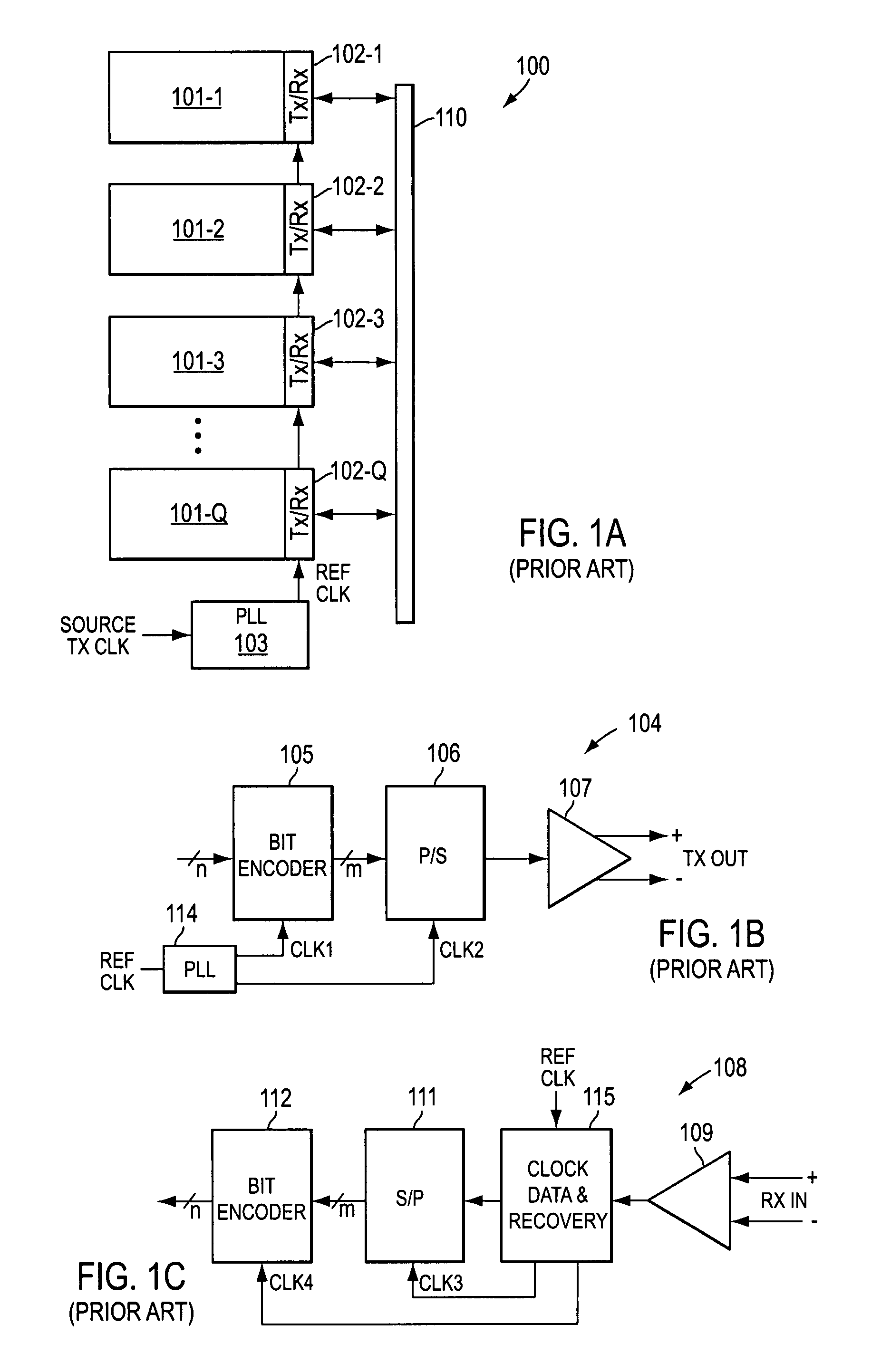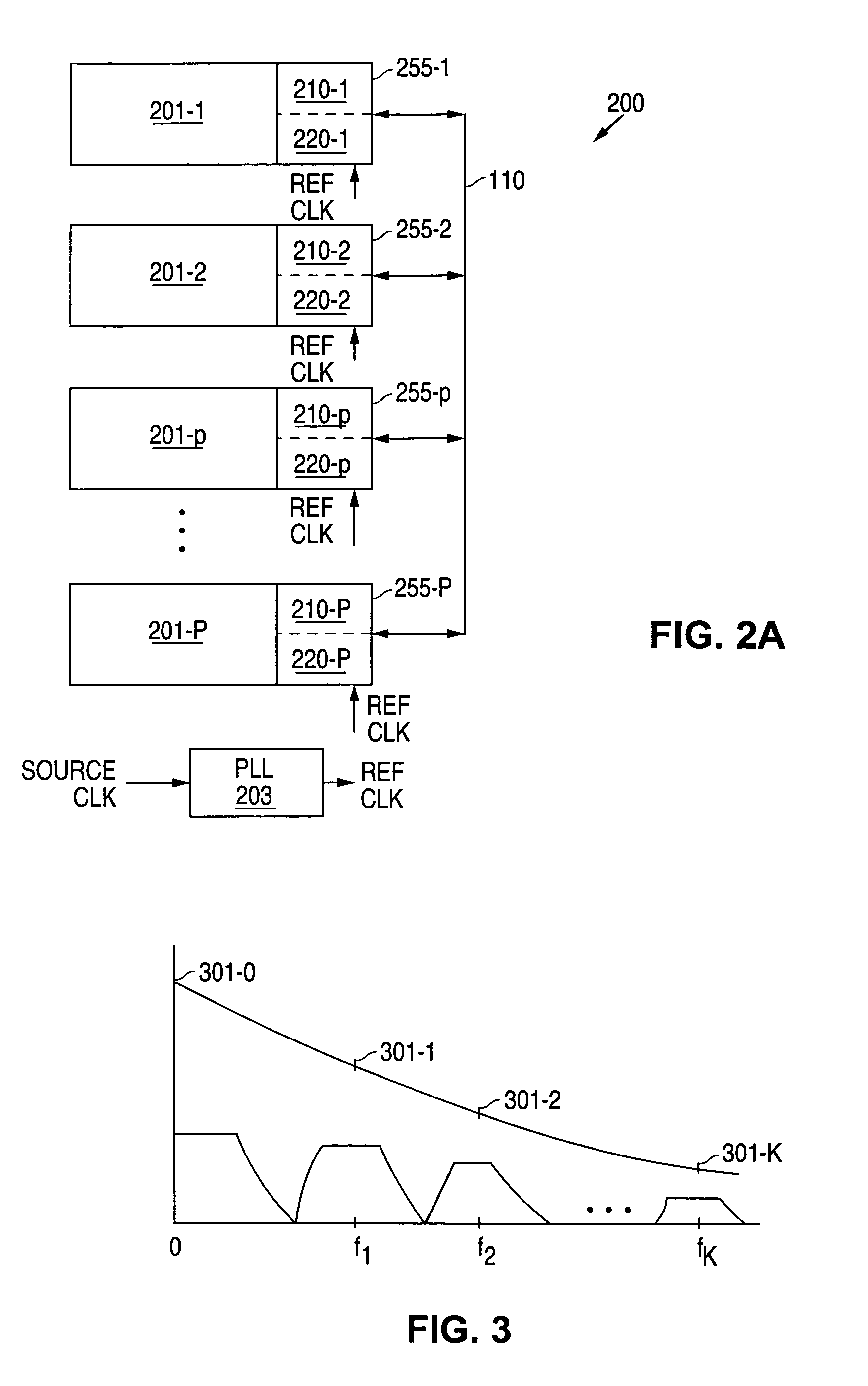Near-end, far-end and echo cancellers in a multi-channel transceiver system
a transceiver and multi-channel technology, applied in the direction of line-transmission details, duplex signal operation, cross-talk reduction, etc., can solve the problems of inefficient bandwidth, difficult to increase the data rate across the bus b>110, and conventional networking environments operate at slower baud rate, so as to reduce interference in signals
- Summary
- Abstract
- Description
- Claims
- Application Information
AI Technical Summary
Benefits of technology
Problems solved by technology
Method used
Image
Examples
Embodiment Construction
[0036]FIG. 2A shows a block diagram of a transmission system 200 according to the present invention. System 200 includes any number of components 201-1 through 201-P, with component 201-p representing an arbitrary one of components 201-1 through 201-P, coupled through a transmission medium 110. Transmission medium 110 may couple component 201-p to all of the components 201-1 through 201-P or may couple component 201-p to selected ones of components 201-1 through 201-P. In some embodiments, individual transmitters and receivers of components 201-1 through 201-P are coupled together through category 5, 5E or 6 twisted copper pair. Further, in some embodiments, transmission medium 110 can include a router to form a transmission network, for example a hub and spoke network, for transmission of data between individual ones of components 201-1 through 201-P.
[0037]System 200 can represent any transmission system, for example a local area network (LAN), wide area network (WAN), digital subs...
PUM
 Login to View More
Login to View More Abstract
Description
Claims
Application Information
 Login to View More
Login to View More - R&D
- Intellectual Property
- Life Sciences
- Materials
- Tech Scout
- Unparalleled Data Quality
- Higher Quality Content
- 60% Fewer Hallucinations
Browse by: Latest US Patents, China's latest patents, Technical Efficacy Thesaurus, Application Domain, Technology Topic, Popular Technical Reports.
© 2025 PatSnap. All rights reserved.Legal|Privacy policy|Modern Slavery Act Transparency Statement|Sitemap|About US| Contact US: help@patsnap.com



